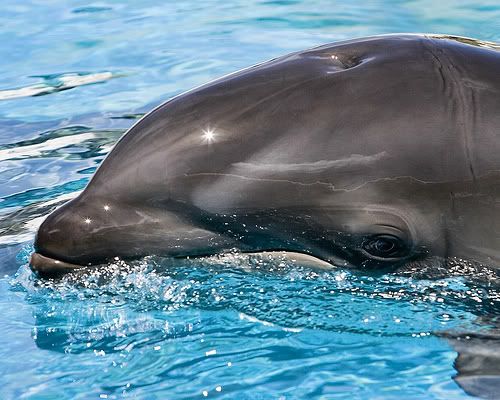Yeah, so these are getting updated after Bill's.
-
Welcome to Smashboards, the world's largest Super Smash Brothers community! Over 250,000 Smash Bros. fans from around the world have come to discuss these great games in over 19 million posts!
You are currently viewing our boards as a visitor. Click here to sign up right now and start on your path in the Smash community!
It appears that you are using ad block :'(
Hey, we get it. However this website is run by and for the community... and it needs ads in order to keep running.
Please disable your adblock on Smashboards, or go premium to hide all advertisements and this notice.
Alternatively, this ad may have just failed to load. Woops!
Please disable your adblock on Smashboards, or go premium to hide all advertisements and this notice.
Alternatively, this ad may have just failed to load. Woops!
The North Carolina Melee Power Rankings - February 11th, 2010
- Thread starter Foxy
- Start date
- Status
- Not open for further replies.
Lightsyde
Smash Champion
Looks like I need to place top 5 at Bill's.
Notgonnahappen;[
Notgonnahappen;[
Juno McGrath
Smash Hero
coming for numbers 8-10Yeah, so these are getting updated after Bill's.
lol
bdenhawk
Smash Journeyman
haha okay!i've said this to like 3 ppl already, but u can have my spot if you want it
stingers
Smash Obsessed
bden accepted
foxy edit that OP
foxy edit that OP
bdenhawk
Smash Journeyman
haha duuude nah im jk.
i wanna earn that spot!
i wanna earn that spot!
stingers
Smash Obsessed
dude u look like pc chris
i'd prolly faint in ur presence anyways
i'd prolly faint in ur presence anyways
Lightsyde
Smash Champion
Alex, it'll happen, no lie.
Bden makes me sweat.
Bden makes me sweat.
bdenhawk
Smash Journeyman
haha nooo dont do that.
Lightsyde
Smash Champion

Bread Dog for NC PR's.
Diatenshi
Smash Lord
i prefer whatever your avatar is
Bread Dog for NC PR's.
penagin?
penguiniagin?
something like penguin... except its not
Mariabattleaxe
Smash Ace
PANGOLIN
the diseased animal from the depths of hell itself
the diseased animal from the depths of hell itself
Diatenshi
Smash Lord
you said it to me like... 10 times and i swear i would have never gotten pangolin out of it
i heard penguin every, single, time
i heard penguin every, single, time
JoshViverette 12:20 am
(12:20:41 AM): SO ridiculous
(12:20:42 AM): what in the ****
(12:20:47 AM): that dog is a loaf of bread
(12:20:41 AM): SO ridiculous
(12:20:42 AM): what in the ****
(12:20:47 AM): that dog is a loaf of bread
stingers
Smash Obsessed
lmaooooooooo
*P*L*U*R*
Smash Hero
Bwahahahahaha!
10stripteasefails
10stripteasefails
Lightsyde
Smash Champion
PANGOLIN
the diseased animal from the depths of hell itself

WHAT DID YOU SAY
stingers
Smash Obsessed
what the hell is that monster
Diatenshi
Smash Lord
The physical appearance of pangolins is marked by large, hardened, plate-like scales. The scales, which are soft on newborn pangolins but harden as the animal matures, are made of keratin, the same material of which human fingernails and tetrapod claws are made. The pangolin is often compared to a walking pine cone or globe artichoke. It can curl up into a ball when threatened, with its overlapping scales acting as armour and its face tucked under its tail. The scales are razor-sharp, providing extra defence. The front claws are so long that they are unsuited for walking, and so the animal walks with its fore paws curled over to protect them. Pangolins can also emit a noxious smelling acid from glands near the anus, similar to the spray of a skunk. Pangolins have short legs, with sharp claws which they use for burrowing into termite and ant mounds, as well as climbing.
The size of pangolins varies by species, ranging from 30 cm to 100 cm (12 to 39 inches). Females are generally smaller than males.
The tongues of pangolins are extremely elongated and extend into the abdominal cavity. By convergent evolution pangolins, the giant anteater, and the tube-lipped nectar bat, all have tongues which are unattached from their hyoid bone and extend past their pharynx deep into the thorax.[6] This extension lies between the sternum and the trachea. Large pangolins can extend their tongues as much as 40 cm (16 inches), with a diameter of only 0.5 cm (1/4 inch).[3]
In pangolins, the section of the brain that relates to problem solving is highly developed. Although their problem solving ability is primarily used to find food in obscure locations, when kept in captivity pangolins are remarkable escape artists.[citation needed].
Arboreal pangolins live in hollow trees, whereas the ground dwelling species dig tunnels underground, up to a depth of 3.5 m (11 feet).[3] Pangolins are also good swimmers.[3]
is this some sort of lost experiment?
like seriously its.... awesome
The size of pangolins varies by species, ranging from 30 cm to 100 cm (12 to 39 inches). Females are generally smaller than males.
The tongues of pangolins are extremely elongated and extend into the abdominal cavity. By convergent evolution pangolins, the giant anteater, and the tube-lipped nectar bat, all have tongues which are unattached from their hyoid bone and extend past their pharynx deep into the thorax.[6] This extension lies between the sternum and the trachea. Large pangolins can extend their tongues as much as 40 cm (16 inches), with a diameter of only 0.5 cm (1/4 inch).[3]
In pangolins, the section of the brain that relates to problem solving is highly developed. Although their problem solving ability is primarily used to find food in obscure locations, when kept in captivity pangolins are remarkable escape artists.[citation needed].
Arboreal pangolins live in hollow trees, whereas the ground dwelling species dig tunnels underground, up to a depth of 3.5 m (11 feet).[3] Pangolins are also good swimmers.[3]
is this some sort of lost experiment?
like seriously its.... awesome
Juno McGrath
Smash Hero
REAL LIFE SANDSHREW OMFG ****
for real josh..
****.
for real josh..
****.
Lightsyde
Smash Champion
I've been raving about Pangolins for years. Best animal ever.
The Wolphin is a close runner up with the best name of any hybrid animal.

The Wolphin is a close runner up with the best name of any hybrid animal.

Mariabattleaxe
Smash Ace
Like I said diseased animal..
WHAT DID YOU SAY
Doesn't even have hair.
Diatenshi
Smash Lord
thats going to haunt my soul...
so i needed a kitty in a can to cheer me up

so i needed a kitty in a can to cheer me up

AlcyoNite
Smash Champion
i see no semblance of a wolf in this creatureI've been raving about Pangolins for years. Best animal ever.
The Wolphin is a close runner up with the best name of any hybrid animal.

Moophobia
Smash Champion
^ This made me laugh my ****in *** offi see no semblance of a wolf in this creature
- Status
- Not open for further replies.
